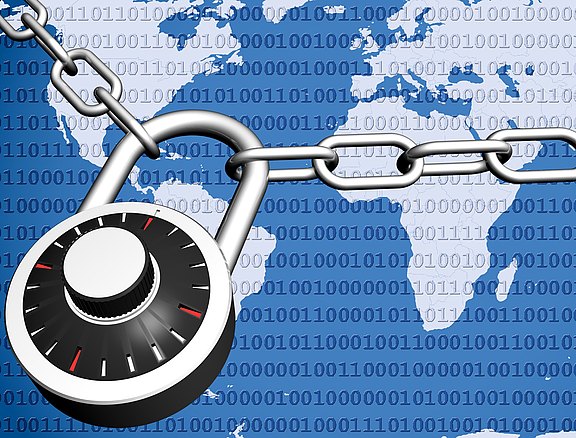An important aspect of digitisation is the shaping of cloud platforms and marketplaces that bring customers and providers together. In this way, the operators of the platforms and marketplaces gain deep insight into the behaviour of the players involved – and they must handle these data in an accordingly responsible manner. At the regulatory level, this is currently reflected in the GDPR (General Data Protection Regulation, in force since 25/5/2018), which standardises and regulates the processing of personal data by private companies and public bodies EU-wide. In this sense, the topic of the security and integrity of data is increasingly gaining in importance.
Blockchain technology is a game changer. In our conversations, we are often asked what the blockchain actually is and what it can do in the field of logistics. Put simply, the blockchain is a protected data structure that builds trust thanks to its nature. Transactions made between different participants are forgery-proof and highly encrypted. Depending on the business case, the degree of decentralisation can be adjusted slightly to achieve a good to extremely high level of reliability. Unlike conventional databases, the data stored in the blockchain sits at a level above the Internet as an additional layer, so to speak. In this respect, the blockchain can be seen as an addition to existing IT landscapes, i.e. minimally invasive, if so required, and therefore also easy to integrate.
The blockchain regulates trusting communication, the secure flow of documents, the proof of authenticity of products and documents, secure payment transactions, the tracking of individual parts (track & trace: Inbound, Intra, Outbound), the secure control of production volumes, the sustainable documentation of important process parameters, balances out contractual parties, and ensures a continuous link beyond company boundaries, etc.
On the other hand, the blockchain was long considered energy-guzzling and slow. We are now starting to see scaling solutions such as those under the name Lightning. Thanks to Lightning, transfers can be executed via the blockchain in milliseconds and with no additional energy demand in the blockchain. This enables new business models such as pay-per-use. Applications are possible in every branch of industry, particularly including, of course, logistics, the automotive industry, payments and healthcare. The solutions have the potential to completely supersede existing payment methods, such as online payment services, instant transfer or credit cards. These solutions are particularly interesting in the industrial environment, since, for example, IoT, the Internet of Things, can be used to carry out transaction-oriented micropayments.
Seen this way, in its extreme form, every logistically transported part or unit could have a digital representative (these days we often talk of a digital twin), which contains its entire history, object dependencies to other parts, contract data, goods value, etc. and can thus autonomously interact in the value creation network.
From a logistics point of view, we see the ideal process defined as the continuous flow of information, finance and material, with no interruption to raw materials right up to the finished product. In terms of the technological prerequisites, the blockchain has what it takes to steer existing processes in this direction and will permanently change the business models currently familiar in B2B and B2C.

